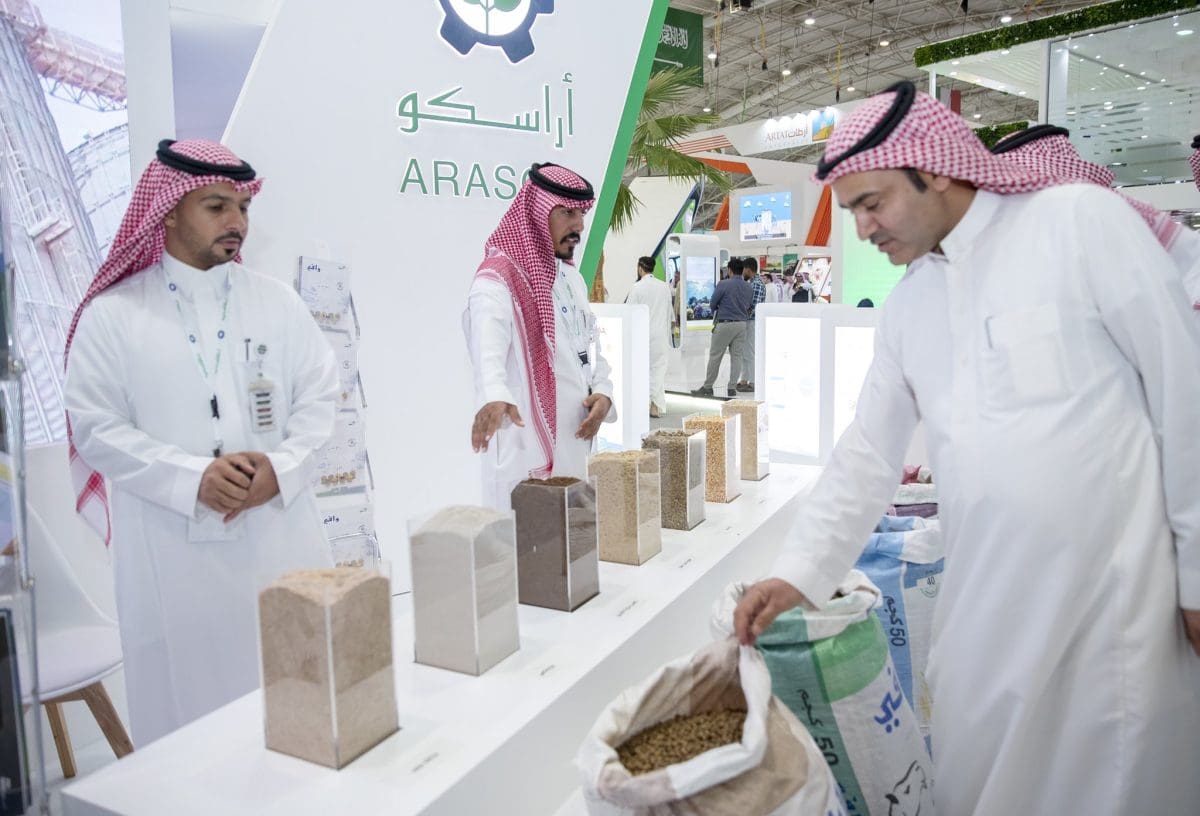
The popularity of pellets as an affordable alternative to grain is on the rise in Saudi Arabia. Photo: ARASCO
SAUDI Arabian barley imports in the 2022-23 marketing year appear likely to increase slightly compared to last season, but they are still expected to be significantly lower than the 10-year average. The ongoing conflict in Ukraine has drastically reduced the availability of Black Sea barley on the international market, leading to a significant increase in the global price and a reduction in demand from the world’s biggest barley importer.
According to the USDA’s Foreign Agricultural Service (FAS), barley imports are expected to be 4.5 million tonnes (Mt) in the current season, around 10pc higher than the 4.1Mt imported in the 2021-22 marketing year. This is still almost 35pc lower than the 6.9Mt imported in 2020-21, and more than 45pc lower than the 8.19Mt annual average for the preceding 10 years.
Barley shipments to Saudi Arabia were relatively buoyant in July and August, with shipping data suggesting 1.42Mt was imported, 29pc higher than the same period in 2021. An abundance of barley available to the international market and a low domestic stockpile that required replenishing are reported to have been the primary drivers. Rumours that the Saudi Government may retrospectively restore the direct barley subsidy regime it removed last year may have also boosted short-term demand.
Policy change
The conjecture among the trade is that the Saudi Government might offer an importer subsidy of US$50/t if the international barley price continues to increase. The government has made such a move before. As recently as August this year, the Saudi Agricultural Fund (an agency of the Saudi Ministry of Environment, Water and Agriculture) purchased 130,000t of barley in conjunction with a local importer.
The barley was reportedly used to increase strategic stock reserves, compensate for supply shortages, and ensure the stability of the stockfeed supply chain. The fund was previously used to finance the import of human-consumption products such as rice and wheat during the COVID-19 pandemic.
Ahead of the privatisation of the Saudi Arabian barley import program in the first half of last year, the government implemented a new animal-feed subsidy that delivers direct monthly payments to small livestock farmers on a per-head basis. To be eligible, farmers can have a maximum of 300 animals from each of the four livestock categories: sheep, goats, camels, and cattle. With an annual budget of $320M, the monthly payments per head of livestock are $2.13 for goats and sheep, $10.67 for camels, and $16 per head for cattle.
Market evolves
While several plausible reasons have been voiced for the significant decrease in Saudi Arabian demand for barley, collectively, they suggest a fundamental, longer-term change in the country’s barley demand profile. The high international price has no doubt had a considerable impact. The elevated cost of stockfeed and a generational shift has seen “recreational” farmers, who only run small herds, exiting the industry.
COVID-19 has been blamed, with tourism shut down and festivals being cancelled. But the overall impact on barley demand due to the pandemic was minimal. Others speculate that the higher raw-material cost has increased transport, storage and feeding efficiencies, reducing waste and making a greater proportion of what has already been imported available for livestock consumption. While that may be the case, it is extremely difficult to see such efficiencies amounting to millions of tonnes in saved losses.
Some traditional barley demand has been replaced by processed feed. ARASCO, a privately owned feed-to-food company, was recently selling a 50-kilogram bag of its complete livestock ration, Wafi, for $18.40. That is around 85pc of the cost of the equivalent quantity of barley.
The big question then becomes: What raw material is being used in the processed pellet instead of barley? There is no evidence to suggest it is wheat, as imports have remained relatively static in recent years. The other possibility is corn, where imports have increased, but not nearly to the extent required to replace the reduction in barley demand.
Australia spike
Australia was a significant contributor to the supply spike in July and August. In June, 266,000t was shipped; in July, 223,000t departed for Saudi Arabia; and in August, it was 323,000t, the second-biggest export month to the kingdom this calendar year. Assuming that half of the June and August exports arrived at Saudi Arabian ports in the July/August period, Australia accounted for more than 36pc of total imports.
The rise of Chinese barley imports this century saw it gradually usurp Saudi Arabia as the biggest destination for Australian barley. However, the Middle East kingdom has resumed that role after China imposed exorbitant tariffs on Australian barley in May 2020, swiftly halting barley exports to the Asian powerhouse.
Australia’s 2021-22 grain export year concluded at the end of September with barley exports totalling 8.035Mt , slightly higher than the 7.917t shipped the previous season. At 3.177Mt, shipments to Saudi Arabia were just shy of 40pc of Australia’s total barley export program in 2021-22. This is up from 2.858Mt, or 36pc of total barley shipments in the 2020-21 season. The only other destination to take more than 1Mt of Australian barley last season was Japan, with 1.119Mt or just under 14pc of total shipments.
Of greatest concern for the Australian farmer with harvest upon us is finding homes for another big crop. While we are competitive globally, the high-price environment appears to be killing demand. China remains a no-go zone, although Australian Prime Minister Anthony Albanese has locked in a meeting today with Chinese President Xi Jinping at the G20 summit in Bali, and the coercive agricultural trade barriers are sure to be a hot topic.
That said, Chinese barley demand out of all eligible origins has reportedly been quite subdued in recent months. And there are no signs that Saudi demand is about to return to the far loftier levels seen over the past 10 years in the absence of a significant global price correction.

HAVE YOUR SAY